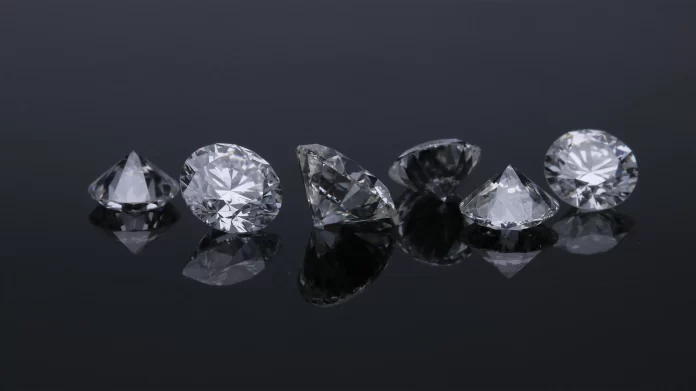Perhaps the most famous and popular of the gemstones, diamonds have captivated us for centuries. As the saying goes, “diamonds are a girl’s best friend” – these stones have often been associated with prestige and luxury in our culture, partly because of their relative scarcity. Traditionally from deep within the Earth, modern science has allowed for another option.
The jewelry industry has witnessed a significant transformation with the emergence of lab-grown diamonds. This has changed the market and messaging around the diamond industry in general. If you’re thinking about buying diamonds in the near future, it would be wise to understand the differences between these options and how to spot the differences. In this guide, we’ll delve into the world of natural diamonds and lab-grown diamonds, exploring their origins, differences in price, methods of differentiation, and essential tips and facts to help you make an informed choice.
How are diamonds made?
Natural Diamonds
Natural diamonds are created deep within the Earth’s mantle, where extreme heat and pressure cause carbon atoms to crystallize into the precious gem we know. Over millions of years, volcanic eruptions bring these diamonds closer to the surface, where they are eventually mined. As the saying goes, ‘pressure makes diamonds’, and in nature this process is a long one!
Lab-Grown Diamonds: In contrast, lab-grown diamonds are produced in controlled environments, such as laboratories, using advanced technological processes. These methods replicate the conditions found beneath the Earth’s surface, resulting in diamonds that are chemically, physically, and optically identical to their natural counterparts.
Pricing
Natural Diamonds: Natural diamonds, due to their rarity and the complexities of mining, tend to be more expensive. The price of a natural diamond can vary significantly based on factors like carat weight, cut, color, clarity, and certification. Obviously the pricing can vary significantly even in natural diamonds, as some diamonds are rarer than others.
Lab-Grown Diamonds: Lab-grown diamonds typically come with a lower price tag than natural diamonds. Their cost-effectiveness arises from the controlled production process and shorter supply chain. While they are generally more affordable, lab-grown diamonds still exhibit the same optical properties and beauty as natural ones.
How to be identify diamonds
Distinguishing between natural and lab-grown diamonds has become increasingly challenging due to advancements in technology. Here are some methods and tips to help you tell the difference:
-
- Certification: The most reliable way to identify a diamond’s origin is through certification. Reputable gemological laboratories, such as GIA (Gemological Institute of America), provide detailed reports on a diamond’s characteristics and origin.
- Laser Inscriptions: Some lab-grown diamonds are laser-inscribed with symbols or codes that indicate their origin. This inscription is typically located on the diamond’s girdle (the outer edge).
- Inclusions: Natural diamonds often contain inclusions, which are tiny imperfections within the stone. While lab-grown diamonds can also have inclusions, they tend to be different in nature and distribution. Inclusions can be examined under a microscope to provide clues about the diamond’s origin.
- Size and Shape: Unusually large or irregularly shaped diamonds may warrant further examination. Natural diamonds of exceptional size or shape are rare, while lab-grown diamonds can be produced in various sizes and shapes more easily.
- Price: While not foolproof, a significantly lower price than what you’d expect for a natural diamond could indicate that the stone is lab-grown.
Other interesting tidbits:
- Environmental Impact: Lab-grown diamonds are often considered a more environmentally sustainable choice because they require fewer resources and have a smaller carbon footprint compared to mining natural diamonds.
- Ethical Considerations: They are often considered the more ethical choice as they do not involve the potential issues related to the diamond mining industry, such as conflict diamonds.
- Resale Value: Natural diamonds typically hold their value over time, while lab-grown diamonds may not appreciate in the same way. However, this can vary depending on market trends and consumer preferences.
- Emotional Value: The choice between natural and lab-grown diamonds often comes down to personal preferences and values. Some people value the symbolism and rarity of natural diamonds, while others appreciate the ethical and sustainable aspects of lab-grown diamonds.
In conclusion, the world of diamonds is evolving, offering consumers more choices than ever before. Whether you opt for a natural diamond or a lab-grown one, both possess their unique characteristics and appeal. Your decision should align with your values, budget, and personal preferences. Ultimately, what makes a diamond truly precious is the love and sentiment it represents, regardless of its origin.
















